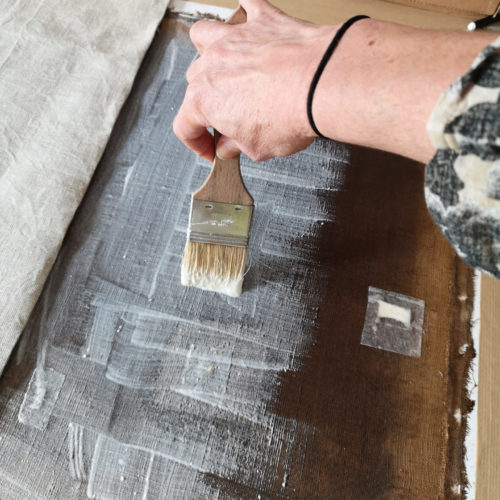From the Newsletter of June 2021… Would you like to receive it by e-mail? Join Muses & A.R.T. !
Or ask it for free via our contact form !
The value of lined works
Today, amateurs and professionals are concerned about the conservation of their heritage… and the state of conservation is an essential criteria for the purchase… If the act of lining is a conservation operation, it often makes the work lose value.
Why is that ?
The lining is a delicate technique recommended when the work presents alterations of the pictorial layer combined with a deficiency of the textile support. It consists of placing one or more new canvases on the back of the original support with the help of an adhesive that penetrates the different layers of the painting, regenerating the glue, the ground and the colored layer.
The adhesive is based on animal preparations, resins and waxes or synthetic resins. The operations can be done cold or hot with an iron or a low pressure table.
The first linings date from the 17th century in Flanders but the Italians as the French claim the paternity of the technique of lining. Each country has its own recipes, wax in the North, the paste glue or colletta (based on rye flour, wheat and animal glues) in France and Italy. From the 18th century onwards, restoration workshops recommended the technique of lining for many paintings and especially for too many pathologies. And therein lies the problem of the use of lining. At that time, it was customary to line a painting in order to enlarge or shrink it… thus causing significant modifications to the work. With our current knowledge and a deontology aiming at respecting the physical and aesthetic integrity of the original work, lining is now a conservation measure that is carried out when the alterations of adhesion and cohesion cannot be treated by other measures such as consolidation for example.
Consequently, a work of art that has been lined gives rise to a feeling of doubt in the art professional as to its workmanship, and we often see a real questioning of its authenticity. Of course, examinations are possible and ultraviolet rays can detect additions and overpaints that may have modified the appearance and the subject, thus seeking to seduce the viewer to the detriment of the aesthetic truth. However, when the overpaints are important, it is difficult to pronounce on the quality of the original colored layer. Only the act of de-restoration will restore the legibility of the remaining work.
You can understand that a lining is likely to be considered as abusive since it was done because of a tear, damaged edges, a simple deformation or a modification of the format for decorative reasons. Today, we know how to treat all these alterations without using lining, which is a difficult operation that requires method and technique, because it can lead to crushing of the material (with lining irons), darkened tones when the adhesive is waxy… without forgetting the current lining techniques which, if they have many advantages in their implementation, often have the disadvantage of a lack of reversibility In spite of everything, lining is a conservative treatment that remains legitimate in the case of serious pathologies.
Paradoxically, the art market as well as collectors are only interested in unrestored works of art for the reasons mentioned above, so what should we conclude ?
We know that a restoration has an impact on the value of a classical painting, but conservation operations will not necessarily diminish the value of the work if the restoration does not affect the appearance, the structure and the integrity… The interventions must therefore result from a precise condition report of the work’s constituents, which may lead the conservator-restorer to recommend the removal of an old lining… To the great pleasure of the collector ! And a new market value !

